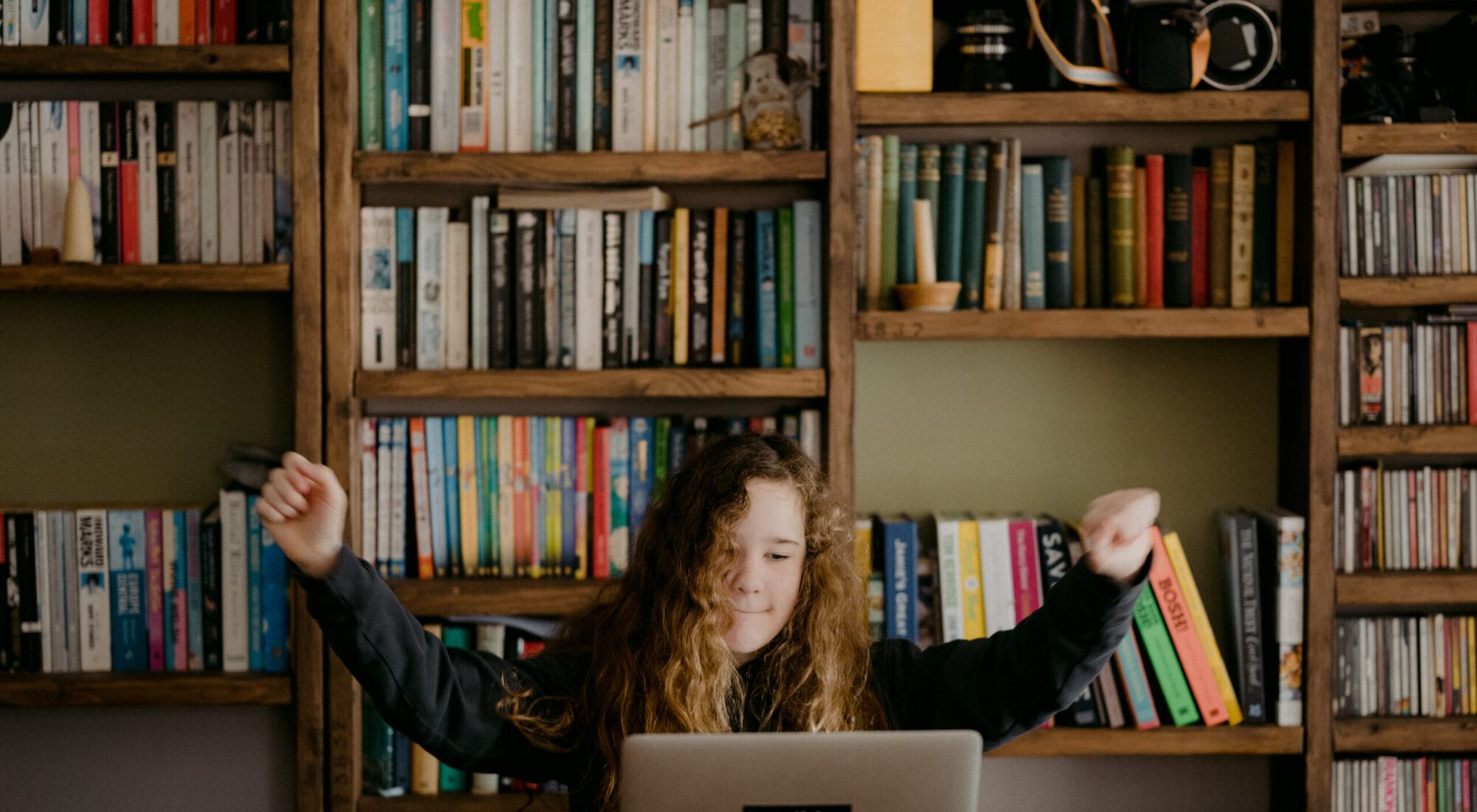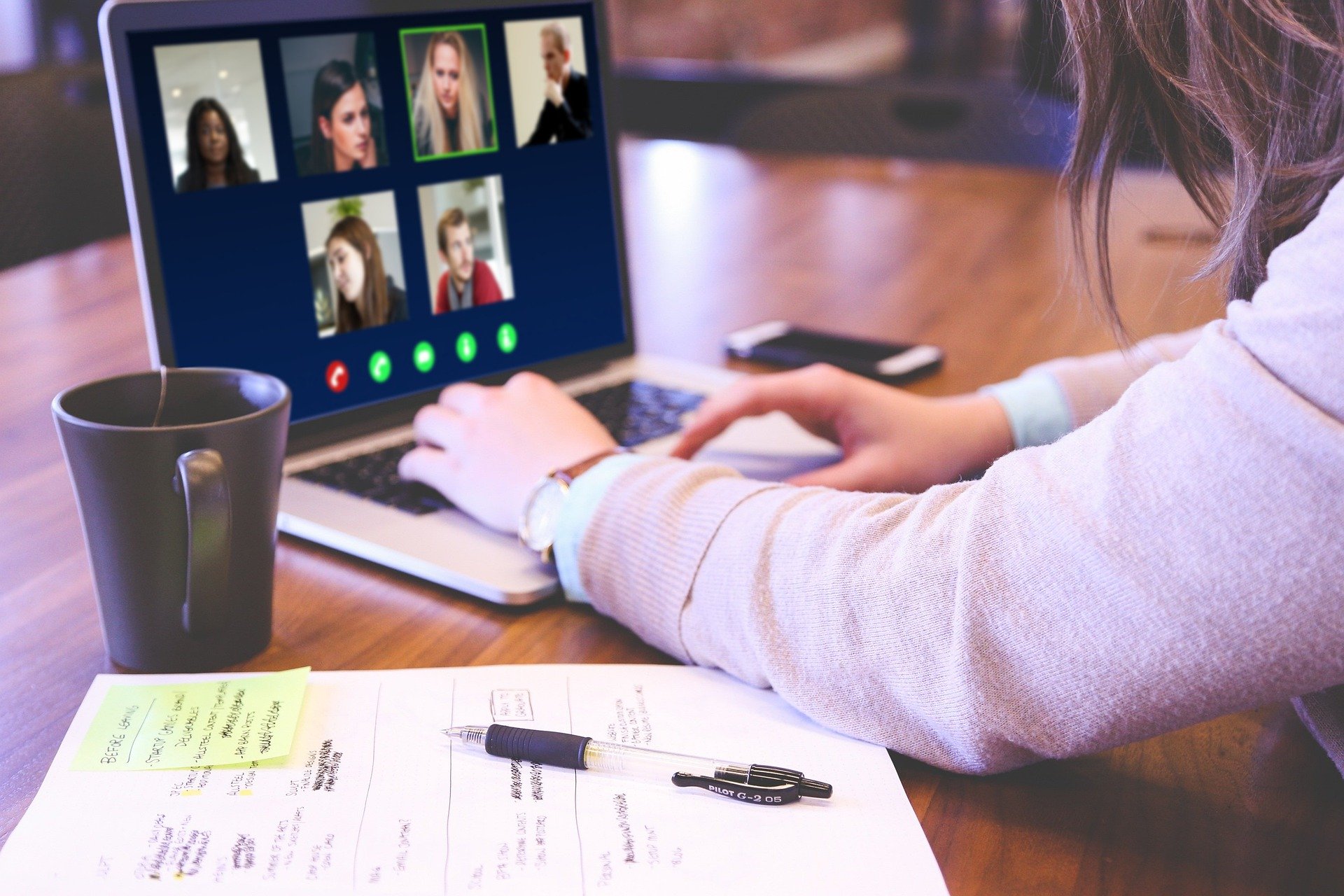In some way, shape or form, we are all going to be using videoconferencing with students in the near future, to some extent. And while many of us have experience with this situation, as the situation around us continues to evolve, we feel like it’s helpful to think about basic understandings. Namely:
- What do you want your students to take away from video-based interactions?
- And what are your goals for these conversations?
Inviting vs. compelling
We’re seeing a lot of discussion of how to get students to keep their cameras on. So much discussion.
And yes, absolutely: being able to see your students’ faces is vital to gauge how engaged they are with the session. Whether they could use clarification, what could use a change-up, and even just taking basic attendance.
But look at the framing of this goal: “How can I get my students to keep their cameras on”. The goal contains an element of compulsion. Students *must* turn their cameras on, or the sun will boil into the sea and plunge us all into a hundred years of darkness.
https://twitter.com/wokeSTEMteacher/status/1302638965669933057
What if, instead, we held the goal of
“How can I create an online session where students want to be fully present?”
You’re all already doing that in your classrooms. You’re creating vibrant, welcoming spaces to hear student voice, a space where student choice matters and has real consequences. And you’re dedicated to knowing your students as people in order to connect with them as learners.
I'm not requiring cameras.
Yesterday I took a minute to explain to my students how weird it is to teach to a bunch of static boxes & that I didn't really sign up for this either. Instantly, about half of them turned on their cameras.
Give your students a chance to be human too.
— Rob Elliott (@robelliottcit) September 3, 2020
So let’s just take that to our Zoom rooms.
Empathy rocks!
When was the last time you, as an educator or as a homeschooling parent, took an online class? (Yes, webinars count.) How did the instructor or presenter treat you? What did you take away from your role as the student?
Slipping back into the student role on a regular basis not only powers up your professional skills (and your non-professional ones; shout-out to everyone making time for hobby classes!) it also grounds you in remembering what it’s like to be a student.
That grounding, that bone-deep empathy borne of being a student in front of a monitor, can provide eye-opening lessons.
Or jaw-dropping ones.
A Case Study
Dawn Kasal Finley, a bomber high school educator, recently recounted her experience taking an online course. Spoiler: she was not treated awesomely.
https://twitter.com/kasal_finley/status/1292494200265744392
Among the many issues she identifies in this twitter thread:
- The instructor mandated student cameras stay on — even while students were eating;
- The instructor commented on the background visible on Finley’s Zoom;
- Students were randomly forgetting to mute — which happens — and the instructor didn’t manage Zoom’s amazing “Mute All” feature;
- Non-participatory lectures dragged on past 20 minutes;
- As a student, Finley wasn’t sure what the goal of each class session was.
Now, we well know that you, educator, would do none of these things to your students.
But these lessons learned all return us to the fundamental guiding practice of respecting students as people as well as learners. Holy cats.
What does it look like to create a safe space inside a videoconferencing session?
Again, we start with empathy.
Every time we enter a videoconferencing space, we’re bringing a host of identities with us. We’re a whirlwind of race, ethnicity, economic status, language fluency, disabilities, and obligations. We are complicated.
Some of us worked a second job last night so we didn’t have time to tidy up the cupboard visible behind us, even though that’s the only chair in the house that doesn’t throw our back out.
Some of us have audio-processing disorders that make us frown or squint at the screen to make out face details. That’s so we can understand the conversation fully.
And frankly, some of us woke up on the wrong side of the bed this morning and can’t find our slippers, coffee, or the dog. We may not have arrived at class in the best of moods.
So what are the conditions that we can create as educators, so that all the students named in those situations feel welcome? Feel wanted. And feel compelled to participate.
Clear guidelines for the win
BOOM.
How about this instead? pic.twitter.com/lYCAvUoydP
— Katie Devaney (@KMD1106) September 6, 2020
These reframed rules are the best practices for videoconferencing with students. And with colleagues, and families.
If you’re cold, or hungry, or you have to pee, or you need to stretch / bounce / growl / shimmy for a moment, go for it.
If you need to blur your background, go for it.
And if you need to take a moment, that’s one thing 2020 has by the bucketload. Go for it.
Back to those goals we mentioned
With all this in mind, perhaps answering the question about our goals for videoconferencing with students becomes easier.
What do you want your students to take away from video-based interactions?
We want students to feel welcome in the online space. To feel like their contributions are valuable and necessary, and infinitely more important than what they’re wearing or where they’re looking.
What are your goals for these conversations?
That every student wants to take part in the conversation. That every student appreciates every other student, and appreciates that this world is currently very difficult, but that these remote learning spaces can offer a place to be centered as a learner, and valued as a person.
Students are people. Educators are people, and we’re all doing our best.
This morning, we’re seeing conversations specifically around the idea that Muslim girls could be wrestling with turning on their cameras during Zoom because they’re adjusting to having to wear a hijab inside their homes. This is a valuable thing to think about, as long as it’s followed by the caveat: whatever each individual girl decides on this topic is absolutely the best thing for her.
If a student gets overwhelmed by the amount of time spent in a videoconference and turns their camera off to reset their attention, or get a drink of water, or use the restroom, that is them deciding on the best thing for themselves.
When you see students as people, you are doing your best.
When you give yourself grace, and when you try different ways of creating community and extending care to students and colleagues and families? You are doing your best.
And we’re so glad you’re here.
I can't remember the last meeting I have been to where I have only had one window open on my computer. students gonna multi task. it's my job to engage them enough to keep their attention. if yawl multi task please email me the good memes at class end.
— William D. Lopez (@lopez_wd) August 23, 2020


